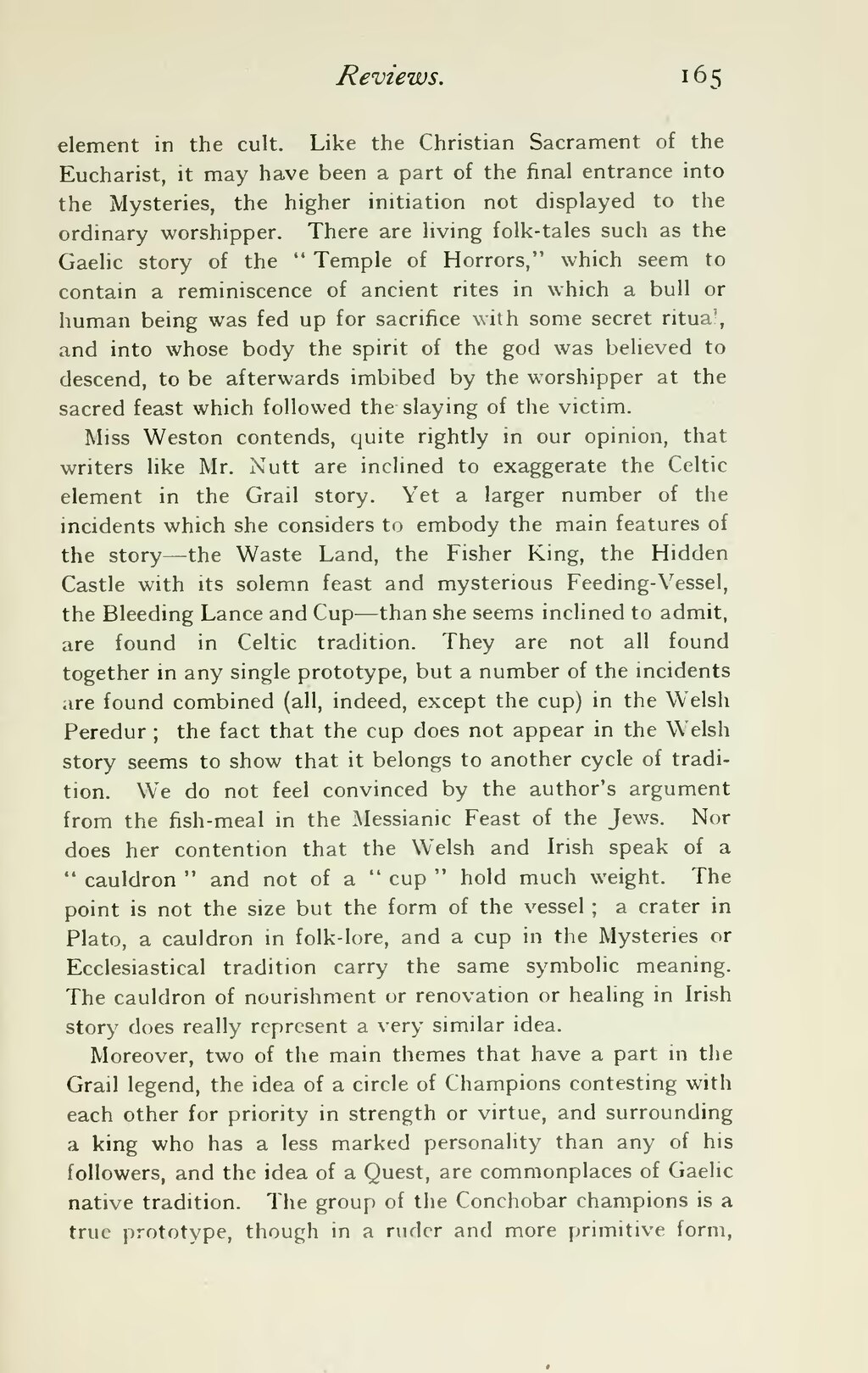element in the cult. Like the Christian Sacrament of the Eucharist, it may have been a part of the final entrance into the Mysteries, the higher initiation not displayed to the ordinary worshipper. There are living folk-tales such as the Gaelic story of the "Temple of Horrors," which seem to contain a reminiscence of ancient rites in which a bull or human being was fed up for sacrifice with some secret ritual, and into whose body the spirit of the god was believed to descend, to be afterwards imbibed by the worshipper at the sacred feast which followed the slaying of the victim.
Miss Weston contends, quite rightly in our opinion, that writers like Mr. Nutt are inclined to exaggerate the Celtic element in the Grail story. Yet a larger number of the incidents which she considers to embody the main features of the story—the Waste Land, the Fisher King, the Hidden Castle with its solemn feast and mysterious Feeding-Vessel, the Bleeding Lance and Cup—than she seems inclined to admit, are found in Celtic tradition. They are not all found together in any single prototype, but a number of the incidents are found combined (all, indeed, except the cup) in the Welsh Peredur; the fact that the cup does not appear in the Welsh story seems to show that it belongs to another cycle of tradition. We do not feel convinced by the author's argument from the fish-meal in the Messianic Feast of the Jews. Nor does her contention that the Welsh and Irish speak of a "cauldron" and not of a "cup" hold much weight. The point is not the size but the form of the vessel; a crater in Plato, a cauldron in folk-lore, and a cup in the Mysteries or Ecclesiastical tradition carry the same symbolic meaning. The cauldron of nourishment or renovation or healing in Irish story does really represent a very similar idea.
Moreover, two of the main themes that have a part in the Grail legend, the idea of a circle of Champions contesting with each other for priority in strength or virtue, and surrounding a king who has a less marked personality than any of his followers, and the idea of a Quest, are commonplaces of Gaelic native tradition. The group of the Conchobar champions is a true prototype, though in a ruder and more primitive form,
